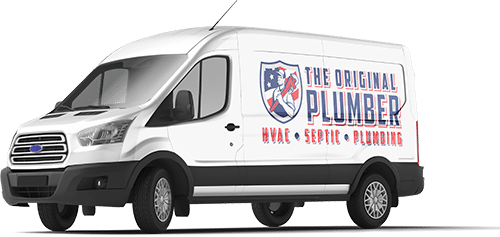The septic ejector pump helps remove solid waste from your home when plumbing fixtures like your sink drain and your toilet are below the main sewer line or septic tank’s grade. If your home has at least one bathroom below the grade, you will have to have a septic ejector pump. If you do not, this will may lead to unwanted waste backing up inside the lines. If you are not sure and want to make certain that you need a pump, please talk to a licensed plumbing professional to make sure.
The Basics of Septic Ejector Pumps
The sump injector pump has a holding tank that is below ground. This tank is designed to hold the sump pumps and catch the waste coming out of your sewer lines. There are drain lines that are then connected to the side of the basin. There is also an outlet line that is attached to the pump that connects to the septic line. If you have a sewer, this is attached to that line. When wastewater goes into the holding tank, there is a float device that activates the pump. Once this device is activated, the wastewater will go into the sewer line or septic tank. As the level of wastewater drops, the float will lower. Once this float is lowered down, the sewage ejector pump turns off. To provide adequate ventilation, there is a vent that is attached to the sewage pump. This vent connects to your existing vent and goes through the roof. To ensure that no smell comes from the sump basin, there is a tightfitting lid that seals. To ensure that waste does not drain back into the sump basin, there is a check valve. There are several different sizes of septic ejector pumps. The one you have will depend on your home’s size and the number of bathrooms that you. Typically, residential models can handle up to 30 gallons of waste material. These effluent pumps will be limited to transport solids to a specific size. If waste items are too large, some sewage pumps can grind them down. Septic or sewage ejector pumps require120 to 240 volts of power depending on the models. Some models have an alarm system that will tell you if something goes wrong with the pump. This will help you to prevent overflows and damage to your pump.Pump Systems in Homes
It is typical to find these pump systems in homes that have laundry rooms or bathrooms located in the basement. If you have a city sewer line that runs in the street, they will be at a higher level, and an ejector pump will be needed. These ejectors are also often found in rural settings where the drain field or holding tank is higher than the plumbing. The pump system needs to be placed in the sump basin. This is cut into the ground, which is below the grade of the home. Each sump can pump out 30 to 40 gallons of waste at a time. Drain lines from the basement area will be sloped down and ran into the ejector pumps. It will have a level where when the wastewater reaches it and will kick on and start the process. The wastewater will then be removed from the basin and will go into the sewer or septic system. When the basin is empty in the float will drop, the pump will turn off and wait until it is full again.Requirements For Pump Systems
There are several requirements that will be needed when the sewer ejection pump is installed.- Vents. To have a sewage ejector pump installed correctly, you will need to have a vent installed. This vent helps to equalize pressure when it is pumping to help the sewer gases to escape. The vent will be placed through an existing vent or through the roof.
- Check valve. It is imperative to have a check valve installed with your sewage ejector pump. This is found in the outlet pipe that leads to the main sewer line. This check valve will keep any wastewater from coming back into the sump basin after it has been pumped into the sewer line. This will also help to ensure that there is no smell coming out of the basin.
- Size. You will need to consider the size of the ejector pump that you will need. There are various sizes for these. If you have an average size home, there will be a standard pump kit that has ½ to ¾ hp motor and pushes around 30 to 40 gallons of wastewater out. You will need to ensure that you get the correct size to ensure that wastewater does not back up into your home. If you are unsure of the size that you need, talking to a reputable plumber in your area will help you determine what size pump you need.
- Budget. A sump pump ejector system can run anywhere from $400 to $1000. The price will depend on the size that you need and the brand you get. You will want to make sure that you purchase quality equipment when buying a pump system. You do not want to repair the system as it is often difficult, and an entire replacement is often needed instead of repair. If you purchase through a local plumber, you may get discounts, especially if you have them install it. Make sure you take the time to do your research to find the best ejector pump out there that you can afford.




